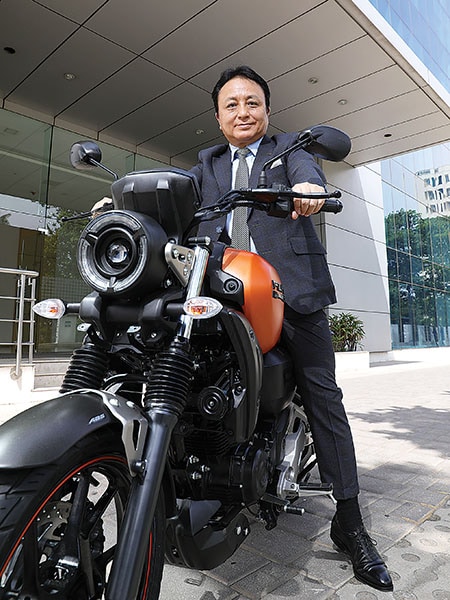
How Yamaha is gearing up to win the Indian two wheeler market
Motofumi Shitara, chairman of Yamaha Motor India Group Companies, talks to Forbes India on the two-wheeler-maker's connected mobility solutions, its quest for 10 percent market share by 2025, and why EVs are the future
 Motofumi Shitara, chairman of Yamaha Motor India Group
Motofumi Shitara, chairman of Yamaha Motor India Group
Image: Balaji Gangadharan for Forbes India
Yamaha Motor Company Yamaha Motor Company is a brand that is globally known for motorcycles that are fast, adventurous and exciting. Yamaha Motors India (YMI), established in 1985, began its journey with motorcycles such as the RX 100, which gained iconic status among enthusiasts, and subsequently launched models such as the Enticer, and its international range such as the YZF-R15 and the FZ series. Since 2015, Yamaha has made a total investment of approximately ₹1,600 crore in India.
Although the company holds a 3.6 percent share in the two-wheeler market in India, the last year has seen it register significant growth. In July 2020, the company had a 4 percent year-on-year growth, which rose to a 33 percent year-on-year by December. Between January and March 2021, Yamaha registered total sales of 156,880 units, which is 14 percent higher than the same period last year.,
Motofumi Shitara, chairman of Yamaha Motor India Group Companies, speaks to Forbes India about how the company aims to gain a 10 percent market share by 2025. A 34-year veteran of Yamaha, he talks about the journey of the brand in India, the evolving preferences of its customers, and the motorcycle categories that can turbo charge the company’s growth in the country. Edited excerpts:
(This story appears in the 30 November, -0001 issue
of Forbes India. To visit our Archives, click here.)








